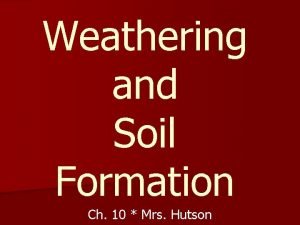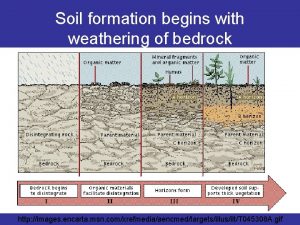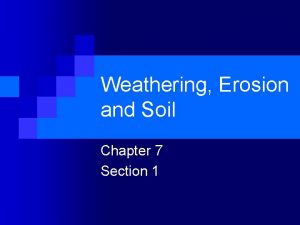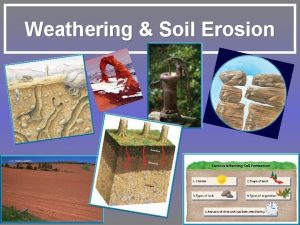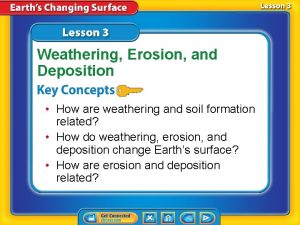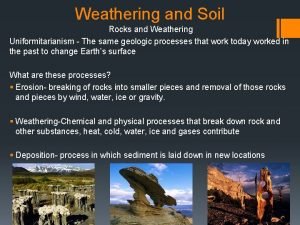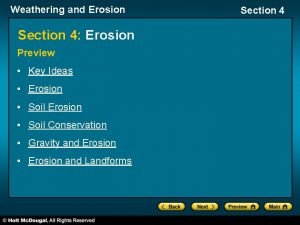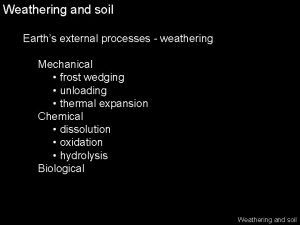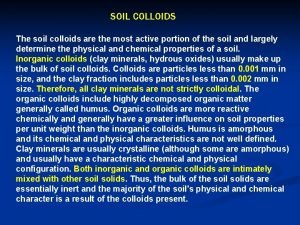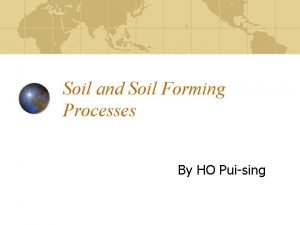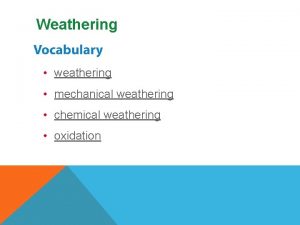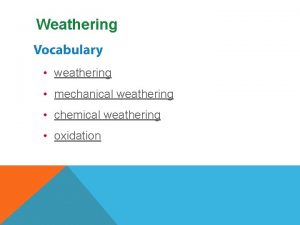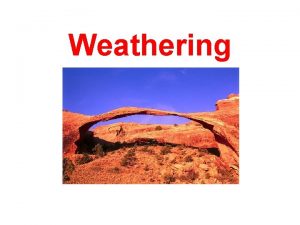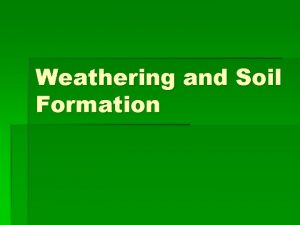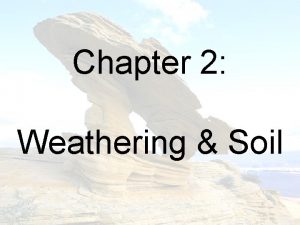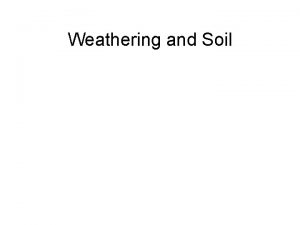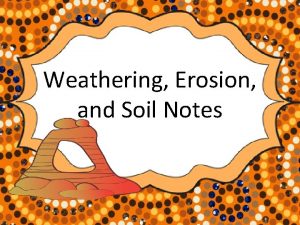Chapter 10 Weathering Soil Formation Section 1 Weathering












- Slides: 12

Chapter 10: Weathering & Soil Formation Section 1: Weathering < Back Next > Preview Main

Chapter 10 Section 1 Weathering Mechanical Weathering is the breakdown of rock into smaller pieces by physical means. 1. Ice: The alternate freezing and thawing of soil and rock, called frost action or ice wedging, is a form of mechanical weathering. < Back Next > Preview Main

2. Abrasion: Abrasion is the grinding and wearing away of rock surfaces through the mechanical action of other rock or sand particles. 3. Wind, Water & Gravity: Wind, water, and gravity carry rocks, causing them to grind against one another. < Back Next > Preview Main

Three Types of Abrasion (pg. 279) < Back Next > Preview Main

Chapter 10 Section 1 Weathering 4. Plants: As a plant grows, the force of the expanding root becomes so strong that it can break a rock apart. 5. Animals: Almost any animal that burrows causes mechanical weathering by mixing and digging through soil and rock particles. < Back Next > Preview Main

Chapter 10 Section 1 Weathering Animals and Mechanical Weathering Animals that burrow in the ground break up soil and loosen rocks to be exposed to further weathering. < Back Next > Preview Main

Chapter 10 Section 1 Weathering Chemical Weathering is the process by which rocks break down as a result of chemical reactions. 1. Water: Even hard rock, such as granite, can be broken down by water. < Back Next > Preview Main

2. Acid Precipitation: The high level of acidity in acid precipitation cause very rapid weathering of rock. 3. Acids in Groundwater: When acidic groundwater comes into contact with limestone, the limestone is dissolved and forms karst features. Karst is a type of topography that is characterized by closed depressions or sinkholes, caves, and underground drainage < Back Next > Preview Main

Acid in groundwater has weathered limestone to form Rusty’s Cave in Dade County, Georgia < Back Next > Preview Main

Chapter 10 Section 1 Weathering 4. Acids in Living Things: Some living things, such as lichens (which consist of fungi & algae living together), produce acids that can slowly break down rocks. < Back Next > Preview Main

5. Air: Oxygen in the air causes oxidation. Oxidation is the chemical reaction in which an element, such as iron, combines with oxygen to form an oxide. This common form of chemical weathering is what causes rust. < Back Next > Preview Main

** Show WEATHERING Brain Pop Video** < Back Next > Preview Main
 Venn diagram of mechanical and chemical weathering
Venn diagram of mechanical and chemical weathering Soil formation begins with the weathering of bedrock
Soil formation begins with the weathering of bedrock Chapter 7 weathering erosion and soil
Chapter 7 weathering erosion and soil Living soil vs dead soil
Living soil vs dead soil Convergent plate boundaries
Convergent plate boundaries Weathering and soil erosion
Weathering and soil erosion Weathering and soil erosion
Weathering and soil erosion Uniformitarianism examples
Uniformitarianism examples Weathering and soil erosion
Weathering and soil erosion High plains weathering
High plains weathering Mechanical and chemical weathering venn diagram
Mechanical and chemical weathering venn diagram Types of soil colloids
Types of soil colloids Eluviation and illuviation
Eluviation and illuviation
